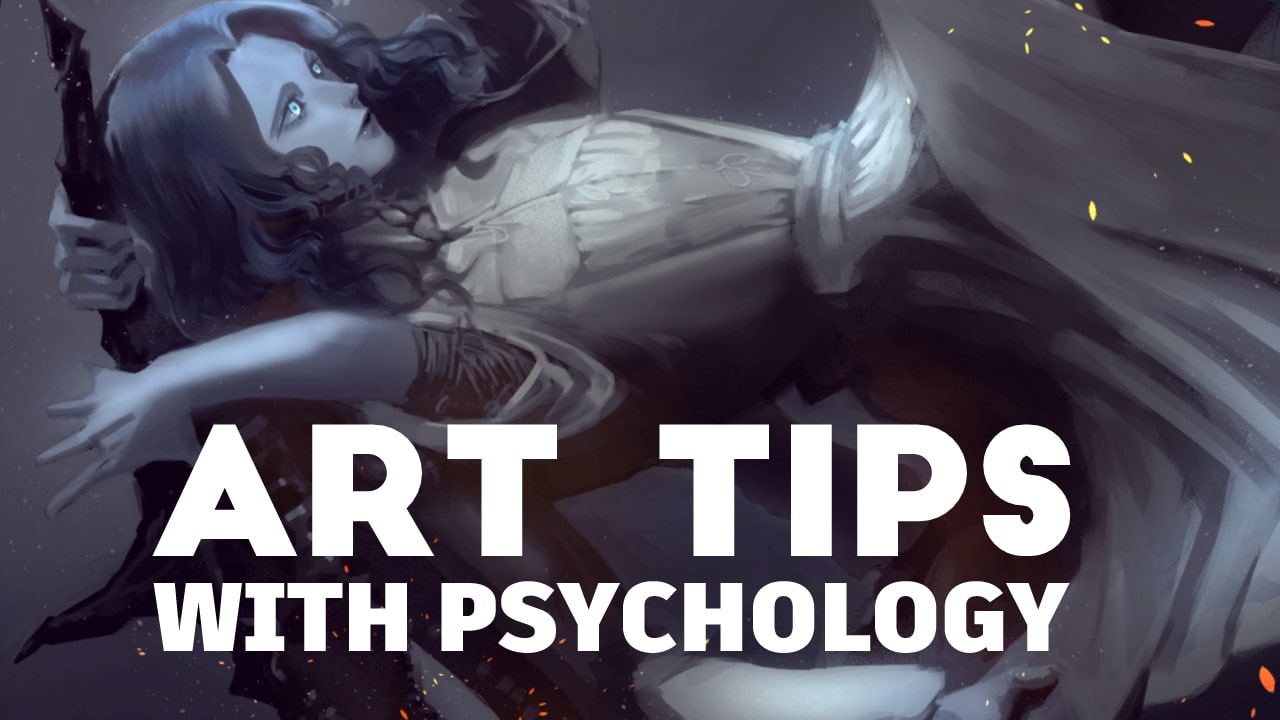
Table of Contents
The Contradicting Feeling of “Perfect” and Inadequacy
Have you ever scrolled through Instagram, Twitter, or other social media, and saw so many beautiful digital artworks there, and you feel your own art would never amount to them? Have you ever suddenly stopped drawing and stared at your own artwork, wondering why it doesn’t feel good enough, no matter what you do? If that’s the case too often, perhaps you have a problem with perfectionism. It is a gnawing feeling that never gets satisfied. Completing you’re own artwork doesn’t give you the feeling of accomplishment anymore. Even when objectively you’ve done a decent job, you just… don’t see it.
You’ve probably heard this before…
But how do we deal with perfectionism? You’ve probably heard of all sorts of motivational speech that goes along like this: “Purge all the negative thoughts! You did a good job! Have confidence! Just don’t compare yourself with other people. You are your worst critic.”
Well, duh! Of course you want to have confidence. Of course you know not to compare yourself with other people. But it’s like telling people not to think about zebras. I wonder if there is a more concrete strategy of dealing with perfectionism for good.
And so we turn to psychology.
According to the APA, the psychology definition of perfectionism is the tendency to demand an extremely high or even flawless level of performance, in excess of what is required by the situation. It is also associated with depression, anxiety, eating disorders, and other mental health problems.
Before we try to deal with perfectionism, first we need to know how it comes to be.
The Cognition-Emotion-Behaviour Triangle
There are multiple perspective in studying psychology; the emotional, the cognitive and the behavioural perspective. These three influence each other.
Emotion is, of course, your feelings. Cognition is your thinking process, and your understanding of the world. Your feelings and thoughts can change how your behave. Conversely, how you behave can also amplify the way you feel and enhance your thoughts.
A Constructive “Perfectionism”
So here is my interpretation of the difference between perfectionism and having a constructive mindset. A constructive attitude, can help you understand what is the standard good. So when you know what “good” looks like, you feel motivated and confidant in your journey. Then you behave in a way that steadily brings you improvement.
A Destructive Perfectionism
On the other hand, maybe you don’t know how good means good. You just kinda feel that there is an abstract concept called perfection that is kinda there, but also kinda out of your reach. Or perhaps you do know exactly what good looks like, you just don’t understand why you’re not reaching the point where your favourite artists are.
And then you ruminate on these thoughts, driving you deeper into fear, jealousy, and self-pity. What happens then, is that your behaviour is silently but significantly influenced. You then choose to spend the time looking for ways to improve this one project, when there are other opportunities to learn.
Finally, you think that too much time has gone by, and you need to finish it. But it’s finished in a doubtful mood and you consider the time wasted. The cycle then continues to spiral.
Control not the “feelings”, but your understanding of the world
So in order to avoid perfectionism, it’ll be ineffective if you simply keep telling yourself “you’re doing fine”, “it’s okay”, and “you’re just too paranoid”. Because you can’t help how you feel. For example, I’ll tell you not to think about Zebras. And in your mind, there are immediately some zebras galloping across the field. If you suppress those perfectionist feelings, they are going to come back later. Sort of like eating cravings.
So instead, you can use both the cognitive and behavioural sides of yourself to change those thoughts.
For cognition, you can search for how long your favourite digital artist practised their crafts before reaching where they are today. Some professionals dedicate their full-time schedule to paint, some are part-time, and some only have 2 hours of free time in their day to draw!
Knowing these things isn’t blatantly telling yourself not to be perfectionistic. But it gives you perspective. You understand that reaching this level is reasonable, and should be your goal. But that level over there is unachievable now and should be given more time.
Look at the big picture
Another… technical tip is to zoom out of our canvas to see the artwork as a whole. See that little spot of detail you ground for hours on? People might not even see that. I think some of the more professional digital artists are more comfortable sharing their artwork in full resolution (you’ll more likely find some at artstation.com). Try zooming in. If they drew a detailed artwork in 4k, you’ll see the surprisingly rough strokes when you zoom it to 100%.
Ok, next is behaviours. When it comes to the moment of the act, you actually have many choices! Other than ruminating on one artwork for days on end. You can swiftly finish it and post it online. Or, you can toss it away and deem it scrap. I’m just joking- don’t toss it away. Scraps can actually be useful references.
Conclusion
So at the end of the day, the knowledge of different perspectives really helps in avoiding feeling bad about yourself. When next time you look at your art and think “why am I not as good as that person”, look ahead a little more- that artist is probably thinking the same thing. And when you look behind you, other artists are probably also thinking the same thing… about you.




